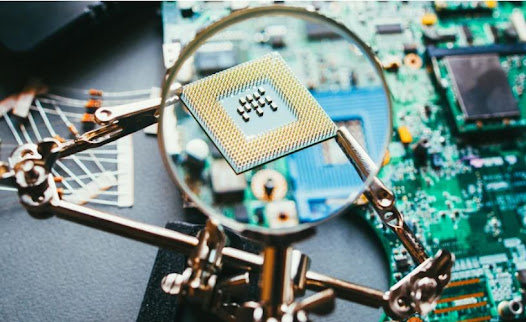The integrity of signal and power distribution is paramount, especially as devices become increasingly compact and high-speed. One critical aspect often overlooked by designers is the PCB stack-up, the arrangement of copper layers and insulating material in a printed circuit board. An optimized PCB stack-up can significantly enhance the performance of a device by reducing noise, improving signal integrity, and minimizing electromagnetic interference (EMI). This blog post delves into advanced PCB stack-up design strategies to minimize noise, a key consideration for ensuring the reliability and functionality of electronic systems.
Understanding PCB Stack-up and Its Importance
PCB stack-up refers to the layer structure of a printed circuit board, including the number of layers, types of materials, and the arrangement of conductive and insulating layers. An effective stack-up can provide multiple benefits:
- Reduced EMI: By optimizing layer arrangement, you can minimize the loop areas through which currents flow, reducing the board's susceptibility to radiating or receiving interference.
- Improved Signal Integrity: Proper stack-up design ensures controlled impedance, reducing reflections and crosstalk between signals.
- Enhanced Power Integrity: A well-designed stack-up can provide a low-inductance path for power and ground, reducing voltage drops and noise on power planes.
Key Principles of Noise Reduction in PCB Stack-up Design
1. Layer Count and Configuration
The number of layers in your PCB and their configuration plays a crucial role in noise reduction. Generally, a multilayer board with separate layers dedicated to power, ground, and signals is recommended. This configuration provides shielding and reduces the loop area for signal return paths.
- Four-Layer Board: A basic multilayer board includes two signal layers and two planes (power and ground). The planes provide shielding and reduce the loop area for signal currents.
- Six or More Layers: Additional layers allow for better separation of noisy and sensitive signals and dedicated ground planes adjacent to signal layers, enhancing EMI shielding.
2. Ground and Power Plane Utilization
Ground planes are not just return paths for current; they also act as shields against noise. Having multiple ground layers or sections can create a low-inductance path for the return current, minimizing noise.
- Adjacent Power and Ground Layers: Placing power and ground planes next to each other creates a capacitance effect, reducing AC impedance and noise on the power plane.
- Decoupling Capacitors: Use these components near IC power pins to provide a local charge reservoir, reducing high-frequency noise.
3. Signal Layer Arrangement
The placement of signal layers relative to ground and power planes is vital for minimizing crosstalk and noise.
- Stripline Configuration: Enclosing signal layers between ground or power planes offers excellent shielding but requires a higher layer count.
- Microstrip Configuration: Signal layers are placed adjacent to an outer plane layer, offering good noise reduction with fewer layers but with more exposure to external EMI.
4. Controlled Impedance
Impedance mismatches can lead to signal reflections and noise. Design your stack-up to achieve controlled impedance for critical signal traces, considering the dielectric constant of materials and trace geometry.
5. Material Considerations
The choice of substrate material can impact the board's electrical performance, particularly at high frequencies. Low-loss materials can reduce signal attenuation and noise.
Practical Tips for Advanced PCB Stack-up Design
- Simulate Before Production: Use simulation tools to model and optimize your stack-up design, allowing you to identify and address potential issues before fabrication.
- Consult with Fabricators: Early collaboration with PCB manufacturers can ensure your design is feasible and cost-effective, considering their capabilities and material options.
- Documentation: Provide clear stack-up documentation in your PCB design files, including layer order, material specifications, and impedance requirements, to avoid misunderstandings with the fabricator.
Case Study: Reducing Noise in a High-Speed PCB Design
To illustrate the impact of advanced stack-up design, consider a case where a designer optimized a high-speed digital board's stack-up. Initially, the board exhibited significant EMI issues and signal integrity problems. By moving to an eight-layer design with strategic layer arrangement and dedicated ground planes, the designer reduced EMI emissions by 20 dB and improved signal rise times, demonstrating the stack-up's role in noise reduction.
Conclusion
Advanced PCB stack-up design is a nuanced process that significantly influences a board's noise performance. By considering factors like layer count, signal placement, material choice, and impedance control, designers can craft PCBs that meet stringent noise requirements, ensuring reliable and high-performance electronic products. As devices continue to evolve in complexity and speed, the importance of meticulous stack-up design will only grow, underscoring its role as a foundational element of successful PCB development.
In the realm of electronics design, an optimized PCB stack-up is not just a best practice; it's a necessity for achieving the highest standards of performance and reliability, especially in noise-sensitive applications.








